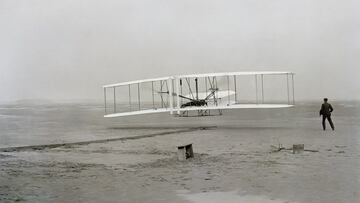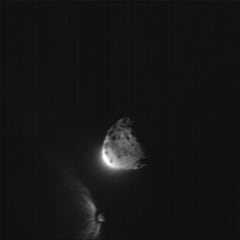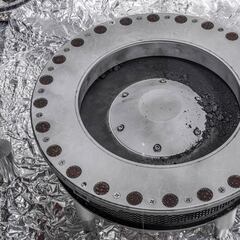Wright Brothers Day: 120th anniversary of the first flight of a powered airplane
120 years ago, the Wright brothers achieved what no one else had until then, inaugurating a new age. Every 17 December their accomplishment is commemorated.

120 years ago, Orville and Wilbur Wright made the breakthrough that would allow humans to reach the heavens and beyond. They achieved what no one else had until then, the first successful flight of a self-propelled, heavier-than-air aircraft, inaugurating the age of aviation.
Sunday 17 December, the First Flight Society will commemorate 120th anniversary of their accomplishment at the Wright Brothers National Memorial in North Carolina.
Wright Brothers Day: 120th anniversary of the first flight of a powered airplane
Every year the First Flight Society, in partnership with the National Parks Service, celebrates Wright Brothers Day by hosting a free event at the Wright Brothers National Memorial located in Kitty Hawk, North Carolina, the site of the first flight.
This year, which marks the 120th anniversary of that milestone in human history, Walter and Olive Ann Beech will be honored, two American aviators and early aviation entrepreneurs that co-founded the Beech Aircraft Company (Beechcraft since 1932). The events begin at 9 am with a flyover and the festivities will include speeches, a wreath laying ceremony, another flyover and a luncheon. For more information you can check the Wright Brothers Day 120th anniversary website.
The story behind the Wright brothers’ first flight
Beginning in 1899, the Wright brothers, who ran a bicycle company in Dayton, Ohio, embarked on their endeavor to develop an airplane. They began with glider experiments from atop Big Kill Devil Hill performing over a thousand.
Once they had solved the problem of controlled flight by adding a moveable rudder, the Wright Brothers, with the assistance of machinist Charles Taylor, designed and build a 12-horsepower internal combustion engine. By the autumn of 1903 they had built a new aircraft with the engine incorporated that would power two pusher propellers.
120 years ago #Today, two Ohio brothers – Wilbur & Orville Wright – made the first bonafide, crewed, heavier-than-air powered flight.pic.twitter.com/7EbKmp5BOM
— Massimo (@Rainmaker1973) December 17, 2023
They transported their aircraft in pieces to the testing ground in North Carolina where they assembled it. The first attempt was on 14 December, but Wilbur, who had won the coin toss to pilot that flight, oversteered upon leaving the launching rail. The flight was over almost as soon as it began as the airplane climbed too steeply, the engine stalled and the aircraft crashed into the sand. It would take three days to make the necessary repairs before they could try again.
Related stories
On 17 December 1903, after four years of sophisticated research and development the Wright brothers made their first successful flight with the gasoline-powered, propeller-driven biplane, the Wright Flyer, they had built. Orville piloted the inaugural flight which lasted 12 seconds with the aircraft traveling 120 feet over the sand dunes at Kitty Hawk, North Carolina. The fourth and final flight of the day was also the best, with Wilbur at the controls, the 59-second flight covered 852 feet.
Milestones in aviation
- 1919: First nonstop transatlantic flight, by British Captain John Alcock and Lieutenant Arthur Whitten Brown
- 1924: First round-the-world flight, by eight US Army Air Service pilots and mechanics
- 1947: First piloted supersonic flight, US Air Force captain Charles "Chuck" Yeager
- 1961: First person in space, Soviet pilot and cosmonaut Yuri Gagarin
- 1969: First man on the moon, American astronaut Neil Armstrong
Sixty-six years later, the first man landed on the Moon. The Apollo 11 mission that took the first humans to the surface of the Moon carried with it a piece of fabric and wood from the Wright Flyer.


